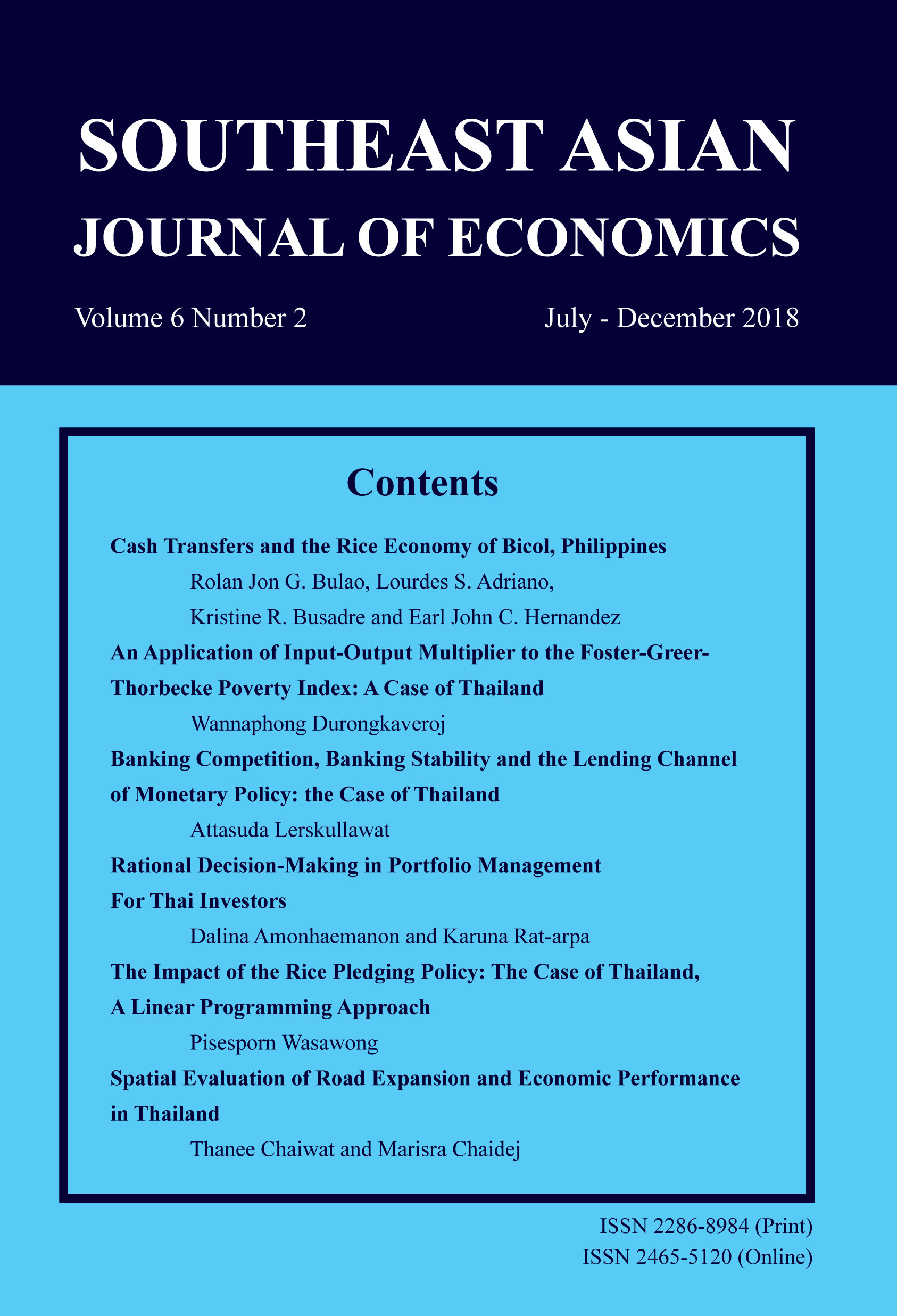Applying Emission Tax and Emission Permit Schemes Controlling Greenhouse Gas Emissions in the Thai-Cement Industry: A Social Welfare Analysis
Keywords:
Emission Tax, Emission Permit, Social Welfare, Cement IndustryAbstract
This paper aims to compare social welfare as a result of applying an emission tax scheme and emission permit schemes to see which scheme provides greater welfare to cement industry in Thailand. The goal is to meet a greenhouse gas emission reduction target. The method of the study consists of three steps including, 1) setting scenarios of emission taxes and emission permits in four different scenarios, 2) applying the Stackelberg model to a partial equilibrium theoretical analysis for the oligopoly cement market, 3) conducting numerical analysis to a social welfare function by using available data from the Thai cement industry. The results of the study show that the net social welfare via the emission permit approach is the best scenario in promoting the follower firms to voluntarity invest in emission reduction projects and allows them to sell the right to emit to the leader firm. These results also show incorporating an emission tax approach and emission permit regulation to both the leader and the follower firms provide the lowest net social welfare. The results of this study could be used as a case study for the domestic greenhouse gas control in the sector where the market structure is an oligopoly. In addition, it could provide relevant information for the Thai government to prepare a compulsory greenhouse gas reduction policy in the future considering social welfare.
Downloads
How to Cite
Issue
Section
License
The submission of a manuscript implies that the paper is an original work and has not been published elsewhere. The author(s) authorize the journal to reproduce or distribute the paper in printed or other electronic forms.







